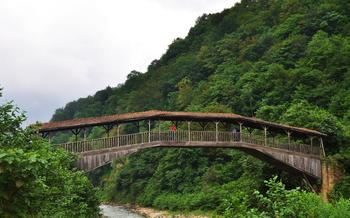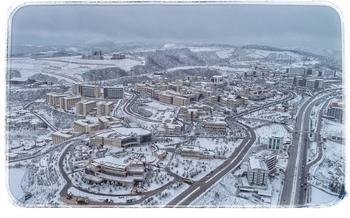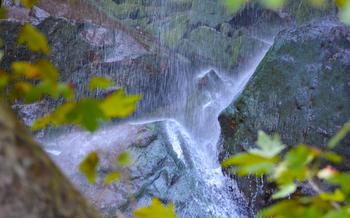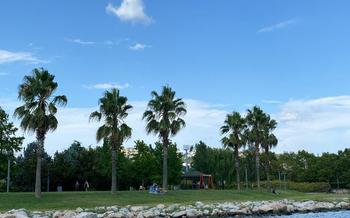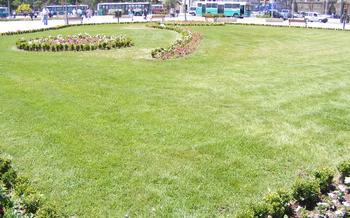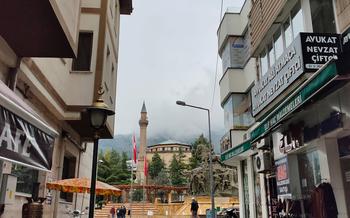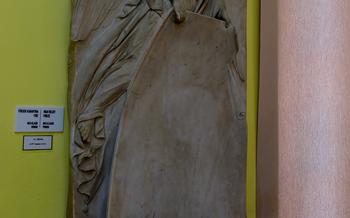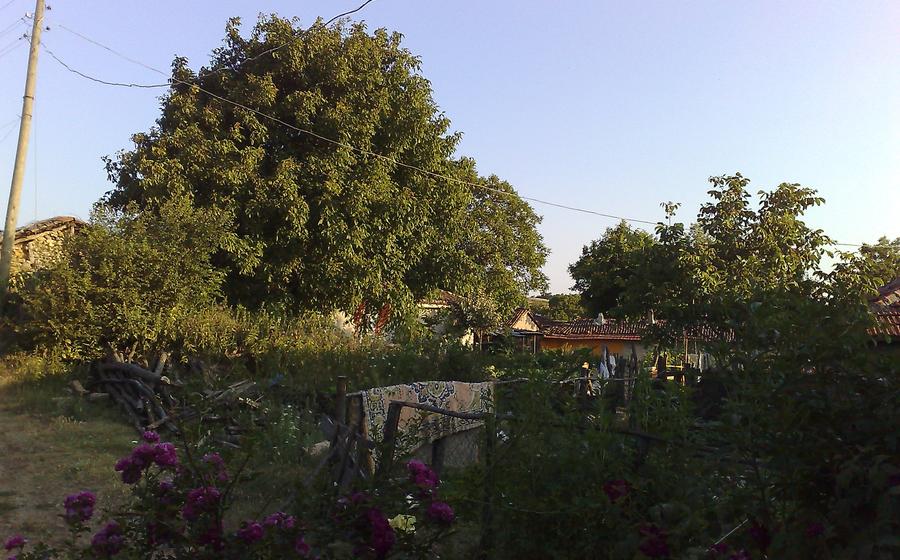
Kırklareli Saka Eagle Monument
- Kırklareli Saka Eagle Monument: A Symbol of Courage and Resilience
- Historical significance of the monument
- Location of the monument
- Architectural features
- The Saka Tribe: A Legacy of Warriors
- The Eagle in Turkish Culture: A Symbol of Strength
- The Creation of the Monument: A Collaborative Effort
- Location and Surroundings: A Picturesque Setting
- Architectural Features: A Unique Design
- Cultural Importance: A Source of Pride
- Historical Significance: A Link to the Past
- Symbolism of the Eagle: A Powerful Message
- Artistic Value: A Masterpiece of Sculpture
- Tourism Potential: A Must-See Attraction
- Local Legends and Folklore: A Rich Tradition
- Events and Commemorations: A Place of Gathering
- Insider Tip: The Best Time to Visit
Kırklareli Saka Eagle Monument: A Symbol of Courage and Resilience
The Kırklareli Saka Eagle Monument stands as a majestic symbol of courage, resilience, and cultural pride in the heart of Kırklareli, Turkey. Erected in 1994, this awe-inspiring monument pays homage to the Saka tribe, a fierce and legendary group of warriors who roamed the steppes of Central Asia centuries ago. The monument's striking design and symbolic significance have made it a beloved landmark among locals and a must-see attraction for visitors from around the world.
Historical significance of the monument
The Kırklareli Saka Eagle Monument holds immense historical significance, embodying the legacy of the Saka tribe and their contributions to ancient history. The Sakas, also known as the Scythians, were a nomadic people who inhabited the vast expanse of Central Asia, stretching from the Black Sea to the Altai Mountains. Renowned for their prowess in warfare and their intricate cultural traditions, the Sakas left an indelible mark on the history of the region.
Location of the monument
The Kırklareli Saka Eagle Monument is situated in the picturesque city of Kırklareli, in the northwestern region of Turkey. The monument proudly stands in the heart of the city, at the intersection of two major boulevards, serving as a focal point for both residents and visitors alike. Its prominent location ensures that the monument remains a constant reminder of the city's rich history and cultural heritage.
Architectural features
The Kırklareli Saka Eagle Monument displays remarkable architectural features that set it apart from other monuments of its kind. The monument stands tall, with a majestic eagle perched atop an intricately designed pedestal. The eagle's wings are spread wide, symbolizing freedom, strength, and protection. The pedestal is adorned with intricate carvings and inscriptions that narrate the history and significance of the Saka tribe.
The Saka Tribe: A Legacy of Warriors
The Saka people, also known as the Scythians, were a nomadic Iranian-speaking people who originated in the steppes of Central Asia. They were renowned for their equestrian skills, their fierce warrior culture, and their mastery of archery. The Saka tribe played a significant role in ancient history, leaving a lasting legacy of military prowess and cultural influence.
Their origins can be traced back to the 7th century BC, when they inhabited the vast expanse of the Eurasian steppe, stretching from the Black Sea to the Altai Mountains. The Saka were divided into several distinct groups, each with its own unique customs and traditions, but they shared a common language and cultural heritage.
The Saka were skilled horsemen and archers, and their military prowess was feared throughout the ancient world. They were known for their lightning-fast raids and their ability to inflict devastating damage on their enemies. The Saka were also skilled metalworkers, and their intricate jewelry and weapons were highly prized.
The Saka tribe made significant contributions to ancient history. They played a key role in the development of the Silk Road, the network of trade routes that connected East and West. The Saka were also instrumental in the spread of Buddhism from India to Central Asia and beyond.
Their legacy continues to be felt today. The Saka people left behind a rich cultural heritage that can be seen in the art, music, and traditions of many Central Asian countries. Their influence can also be seen in the names of many cities and regions, such as Sakarya in Turkey and Samarkand in Uzbekistan.
The Eagle in Turkish Culture: A Symbol of Strength
The eagle holds a significant place in Turkish culture, symbolizing strength, courage, and resilience. Throughout history, the eagle has been revered as a majestic creature associated with power and authority. In ancient Turkish mythology, the eagle was often depicted as a divine messenger, carrying messages between the gods and mortals.
The eagle's presence in Turkish culture is evident in various forms of art, including traditional carpets, pottery, and jewelry. The eagle motif is commonly used to decorate these items, representing protection, good fortune, and strength. The eagle's image can also be found in Turkish literature, where it is often used to symbolize the qualities of a hero or a leader.
In modern times, the eagle remains a prominent symbol in Turkey. It is featured on the country's coat of arms and the presidential seal, representing the strength and sovereignty of the Turkish state. The eagle's image is also used by various organizations, businesses, and sports teams as a symbol of power, determination, and success.
The Creation of the Monument: A Collaborative Effort
The Kırklareli Saka Eagle Monument is a testament to the power of collaboration between an inspired artist and a supportive community. The monument's creator, a renowned sculptor known for his passion for history and cultural heritage, drew inspiration from the rich traditions of the Saka people and the significance of the eagle in Turkish culture.
Collaborating closely with local authorities, the artist embarked on a journey to bring his vision to life. Together, they selected the ideal location for the monument, ensuring its prominence and accessibility within the city's urban fabric. The artist meticulously crafted each element of the monument, from the imposing eagle's powerful stance to the intricate details adorning its wings.
The construction process involved careful attention to materials and techniques. The artist chose durable materials that would withstand the test of time, symbolizing the enduring spirit of the Saka people. Local artisans and craftsmen lent their expertise, employing traditional methods to create the monument's intricate features.
The installation and unveiling of the monument were momentous occasions for the city of Kırklareli. Residents gathered in anticipation, eager to witness the culmination of years of dedication and collaboration. The artist himself expressed a profound sense of pride and fulfillment, knowing that his creation would stand as a lasting tribute to the Saka heritage and the resilience of the Turkish people.
Location and Surroundings: A Picturesque Setting
The Kırklareli Saka Eagle Monument is situated in the heart of Kırklareli, a city in northwestern Turkey. The monument stands proudly in the city's main square, surrounded by lush gardens and vibrant historical buildings. The square is a popular gathering place for locals and tourists alike, offering a vibrant atmosphere and a glimpse into the city's rich history.
The surrounding area of the monument is steeped in historical and cultural significance. Kırklareli has been inhabited since ancient times and was once an important center of the Roman Empire. The city is home to numerous historical sites, including ancient ruins, medieval churches, and Ottoman mosques. Visitors to the Saka Eagle Monument can easily explore these nearby attractions, gaining a deeper understanding of the city's diverse heritage.
The monument's location in the city center makes it easily accessible by foot, public transportation, or car. Ample parking is available nearby, ensuring a convenient visit for all. Whether you're a history buff, a culture enthusiast, or simply looking for a beautiful place to relax and enjoy the scenery, the Kırklareli Saka Eagle Monument and its surroundings offer a captivating experience for all visitors.
Architectural Features: A Unique Design
The Kırklareli Saka Eagle Monument stands out for its unique architectural features. Its towering structure, measuring 12 meters in height, is a testament to the strength and resilience of the Saka people. The monument is constructed from a combination of granite and bronze, with the eagle's body and wings rendered in bronze and the pedestal crafted from granite. The contrast between the dark granite and the gleaming bronze creates a striking visual effect, further enhancing the monument's grandeur.
The eagle's wings, spread wide as if in flight, measure an impressive 15 meters from tip to tip. This expansive wingspan adds to the monument's sense of majesty and power. The eagle's head is turned slightly to the side, as if it is surveying the land below with a watchful eye. Its piercing gaze and determined expression convey a sense of strength and determination.
The pedestal of the monument features intricate carvings depicting scenes from Saka history and mythology. These carvings provide a glimpse into the rich cultural heritage of the Saka people and add an additional layer of depth and meaning to the monument.
Overall, the architectural features of the Kırklareli Saka Eagle Monument combine to create a striking and memorable landmark that honors the legacy of the Saka people and serves as a symbol of Kırklareli's cultural identity.
Cultural Importance: A Source of Pride
The Kırklareli Saka Eagle Monument holds immense cultural significance for the city and its residents. It serves as a symbol of Kırklareli's rich history and cultural identity. The monument represents the city's deep-rooted connection to the Saka tribe and their legacy of bravery and resilience. It is a source of pride for local residents, who view it as a tangible symbol of their city's unique heritage and identity. The monument is frequently featured in local festivals and events, where it serves as a focal point for community gatherings and celebrations. Its presence adds a sense of grandeur and historical significance to these events, reinforcing the bond between the people of Kırklareli and their cultural roots.
Historical Significance: A Link to the Past
The Kırklareli Saka Eagle Monument stands as a testament to the rich history of the city and its connection to the ancient Saka tribe. The monument serves as a physical representation of Kırklareli's role in the ancient world, reminding visitors of the city's enduring legacy.
The Saka tribe, known for their military prowess and cultural traditions, left an indelible mark on history. The monument pays homage to their contributions and acknowledges the Saka people's influence on the development of the region.
Furthermore, the monument symbolizes Kırklareli's resilience and endurance throughout the centuries. Having weathered various historical storms, the city has emerged as a vibrant and thriving center, embodying the strength and determination of its people.
Lastly, the monument serves as an educational resource, providing visitors with a glimpse into the past and encouraging them to delve deeper into the fascinating history of Kırklareli and the Saka tribe.
Symbolism of the Eagle: A Powerful Message
The eagle depicted in the Kırklareli Saka Eagle Monument is not merely a decorative element; it carries a profound symbolic meaning. The mighty bird, with its wings outstretched and its gaze fixed on the horizon, represents the strength, courage, and determination of the Saka people. The eagle's pose, poised for flight, conveys a sense of readiness to face any challenge and overcome any obstacle.
The eagle also serves as a symbol of unity and national pride for the people of Kırklareli. It represents their shared history, their cultural identity, and their unwavering commitment to their homeland. The eagle's commanding presence atop the monument reminds them of their rich heritage and their indomitable spirit.
In many cultures around the world, the eagle has been revered as a symbol of power, majesty, and leadership. The Kırklareli Saka Eagle Monument draws on this universal symbolism, creating a connection between the city and other cultures that share a deep appreciation for this noble bird.
Artistic Value: A Masterpiece of Sculpture
The Kırklareli Saka Eagle Monument stands as a testament to the artistic prowess of its creator. Renowned sculptor Mehmet Aksoy meticulously crafted the monument using bronze, a material known for its durability and resistance to the elements. The intricate details and lifelike features of the eagle are a testament to Aksoy's skill and attention to detail.
The monument's design is both unique and captivating. Aksoy employed a combination of traditional and contemporary techniques to create a sculpture that is both visually striking and deeply meaningful. The eagle's pose, with its wings outstretched and its head held high, exudes a sense of power and determination. The monument's size and scale further enhance its impact, making it an awe-inspiring sight for visitors.
The Kırklareli Saka Eagle Monument is not only a symbol of Kırklareli's rich history and cultural heritage but also a masterpiece of modern sculpture. Its artistic value is undeniable, making it a must-see attraction for anyone interested in art, history, or culture.
Tourism Potential: A Must-See Attraction
The Kırklareli Saka Eagle Monument is not just a symbol of cultural heritage and historical significance; it is also a major tourist attraction that draws visitors from around the country and beyond. Its unique design and compelling narrative make it a must-see destination for anyone interested in Turkish history, culture, and art.
The monument's popularity among tourists has helped to boost Kırklareli's tourism industry, bringing in revenue and creating employment opportunities for local businesses. The city has seen an increase in the number of visitors, particularly during the summer months when the weather is ideal for exploring the city's many attractions.
To further promote the monument and attract even more tourists, local authorities have been working to improve the city's infrastructure and develop new tourism initiatives. This includes creating new tourist routes, providing multilingual guides, and hosting special events and festivals that showcase the city's rich cultural heritage.
By increasing its visibility and promoting its unique attractions, the Kırklareli Saka Eagle Monument has the potential to become a major tourism hub, not only in Turkey but also on the international stage. Its powerful symbolism and captivating story are sure to leave a lasting impression on visitors, making it a must-visit destination for anyone seeking a glimpse into Turkey's rich history and vibrant culture.
Local Legends and Folklore: A Rich Tradition
The Kırklareli Saka Eagle Monument is not merely a symbol of history and courage; it is also a source of inspiration for local legends and folklore. Over the centuries, the monument has become entwined with the cultural fabric of the city, giving rise to a rich tapestry of myths and stories.
One popular legend tells of a young Saka warrior who, while defending his homeland against invaders, was mortally wounded. As he lay dying, he clutched his eagle standard close to his chest, praying that his spirit would live on to protect his people. His wish was granted, and his spirit became the eagle that now stands atop the monument, watching over the city and its inhabitants.
Another legend speaks of a beautiful princess who was kidnapped by a cruel tyrant. She was taken to a distant land, where she was held captive in a dark and lonely tower. One day, she spotted a magnificent eagle soaring through the sky. She called out to the eagle, pleading for its help. The eagle heard her cries and swooped down to rescue her. Together, they escaped from the tyrant's clutches and returned to Kırklareli, where they lived happily ever after.
These legends and countless others have been passed down through generations, enriching the cultural heritage of Kırklareli. They serve as a reminder of the city's deep roots and its connection to the past.
Events and Commemorations: A Place of Gathering
The Kırklareli Saka Eagle Monument serves as a significant gathering place for various events and commemorations that hold deep cultural and historical significance for the local community. National holidays, such as Republic Day and Victory Day, are celebrated with fervor at the monument, where residents come together to honor their nation's heritage and achievements.
The monument also plays a central role in community events and festivals, transforming into a vibrant hub of activity. During these celebrations, traditional music and dance performances fill the air, showcasing the rich cultural traditions of the region. Locals and visitors alike gather around the monument to share stories, laughter, and a sense of communal belonging.
These events not only foster a sense of unity and pride among the residents but also provide a platform for cultural exchange and appreciation. The monument becomes a symbol of the community's shared history, resilience, and unwavering spirit, strengthening the bonds that unite them.
Insider Tip: The Best Time to Visit
When it comes to capturing the perfect photo of the Kırklareli Saka Eagle Monument, timing is everything. The early morning light, as the sun rises over the horizon, casts a warm glow on the monument, creating a stunning backdrop for your shots. As the day progresses, the changing light conditions offer different perspectives and opportunities for photography enthusiasts.
If you're looking to experience the monument in its full glory, plan your visit during the annual Saka Festival, held in Kırklareli every August. The festival brings the city alive with vibrant celebrations, traditional performances, and cultural exhibitions, creating a lively atmosphere around the monument.
To avoid crowds and enjoy a more serene experience, consider visiting during the shoulder seasons (spring and autumn), when the weather is still pleasant but the tourist numbers are lower. This will give you ample time to explore the monument at your own pace and capture some truly unique shots.
Remember, the best time to visit the Kırklareli Saka Eagle Monument is the one that aligns with your interests and preferences. Whether you're a history buff, a photography enthusiast, or simply someone who appreciates the beauty and symbolism of this iconic landmark, you're sure to find something special here.

